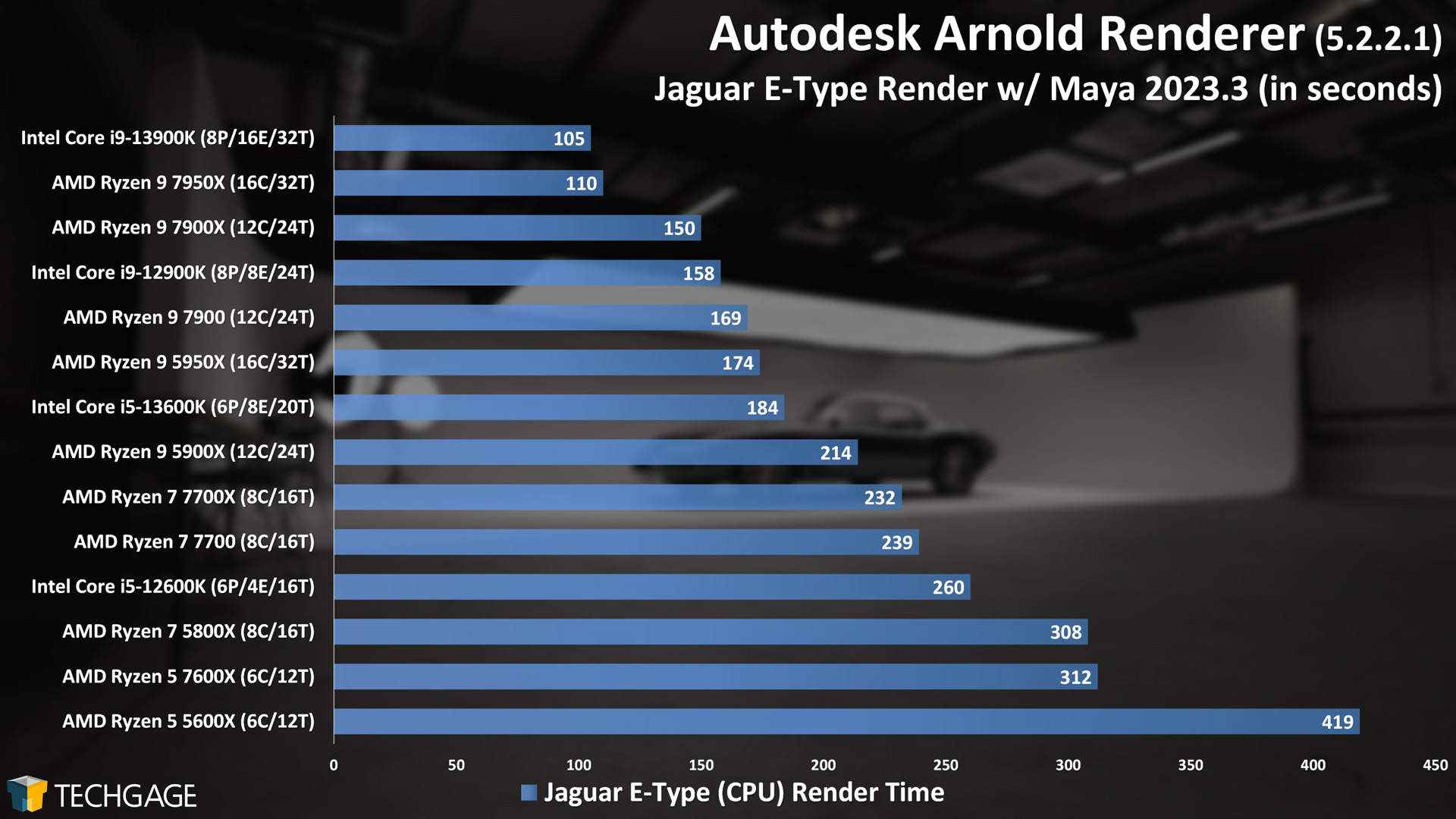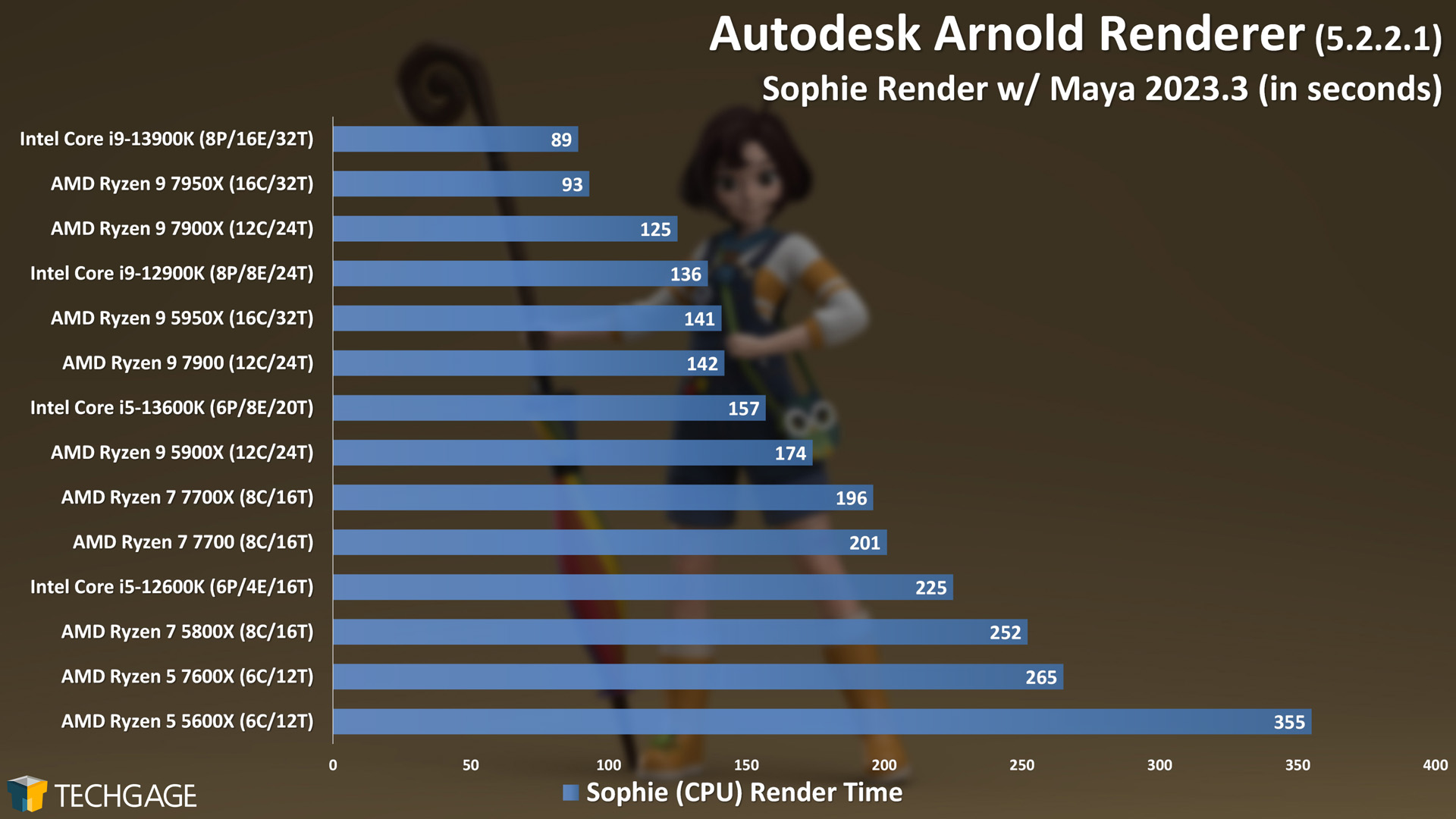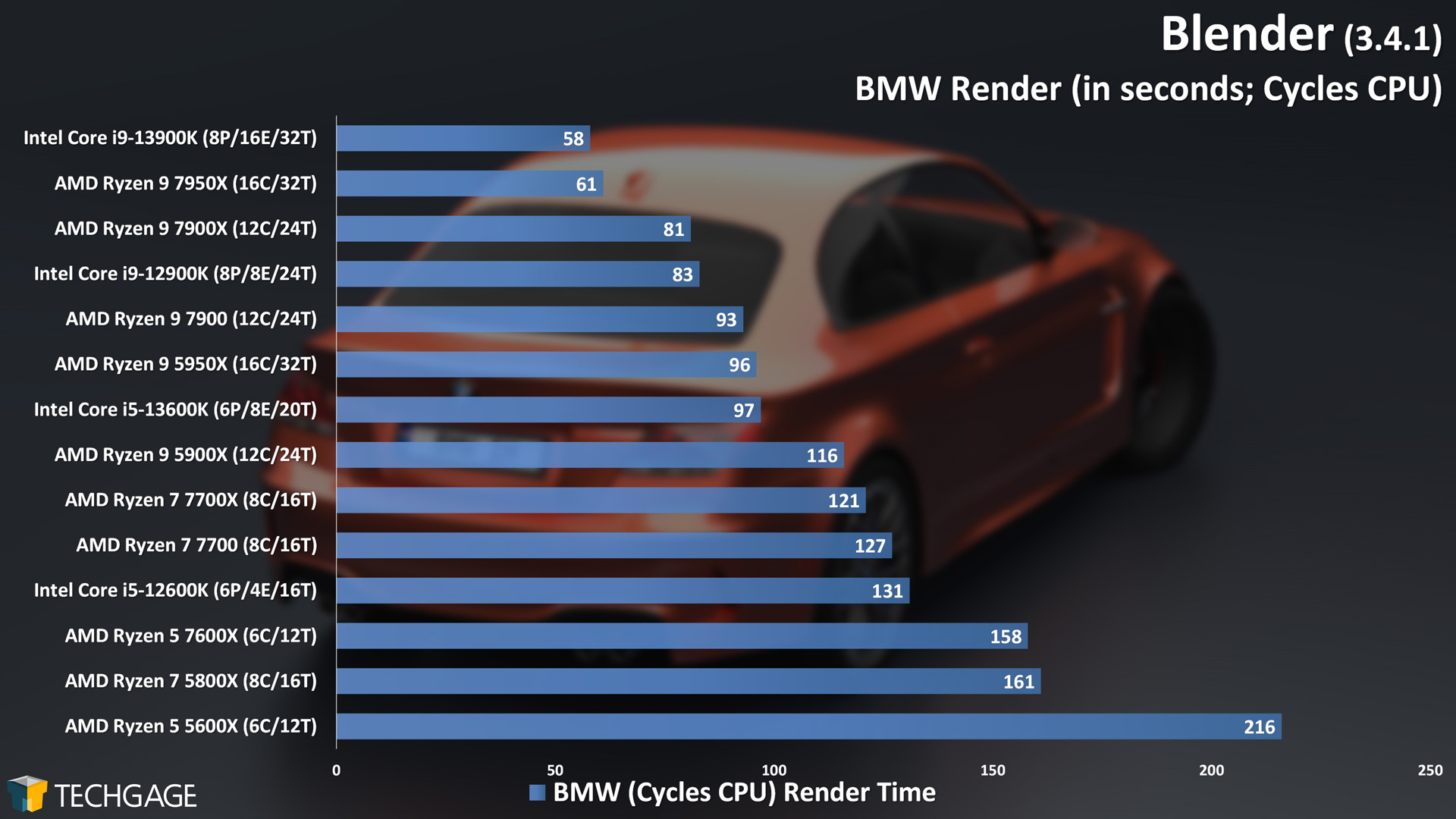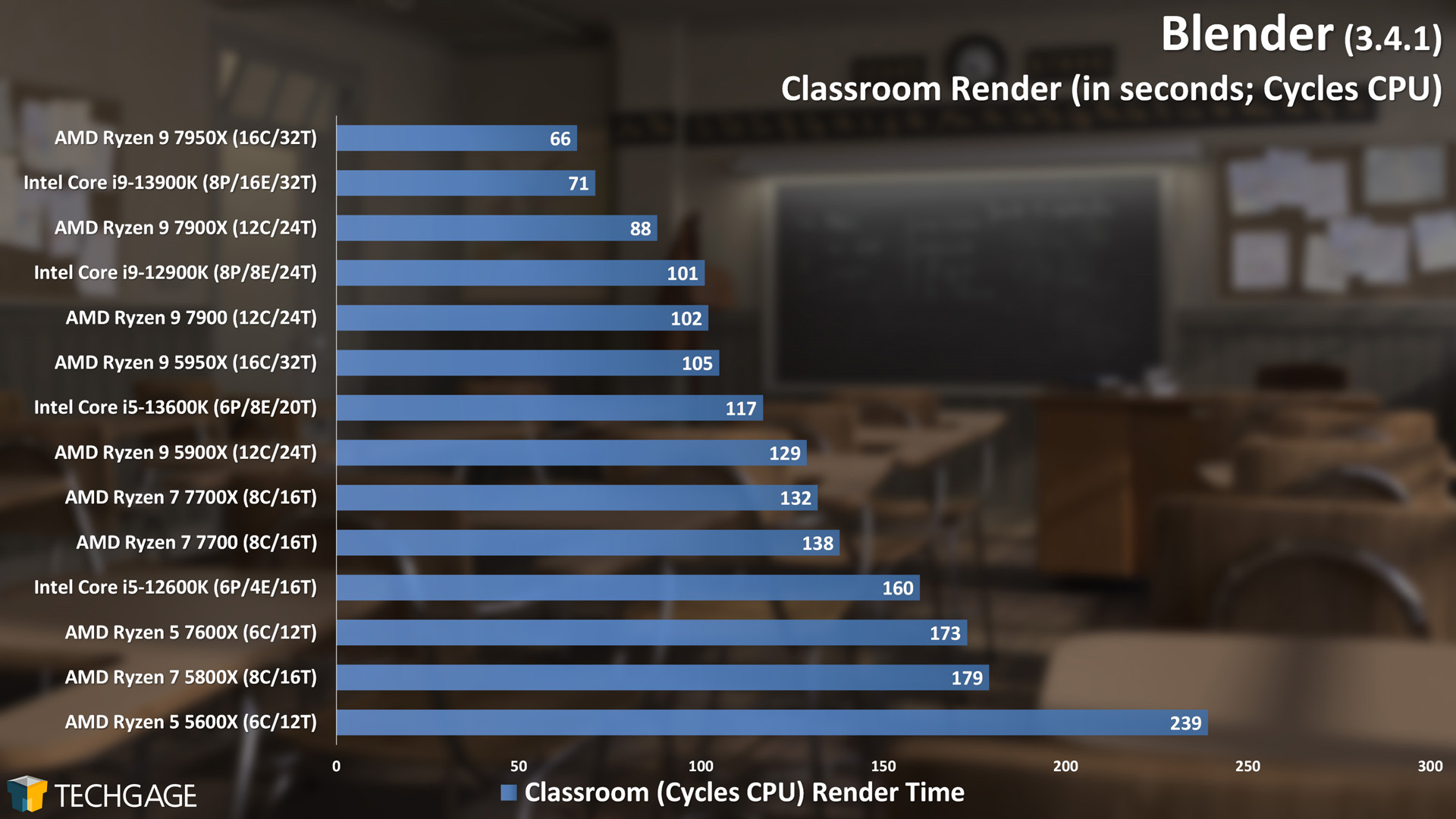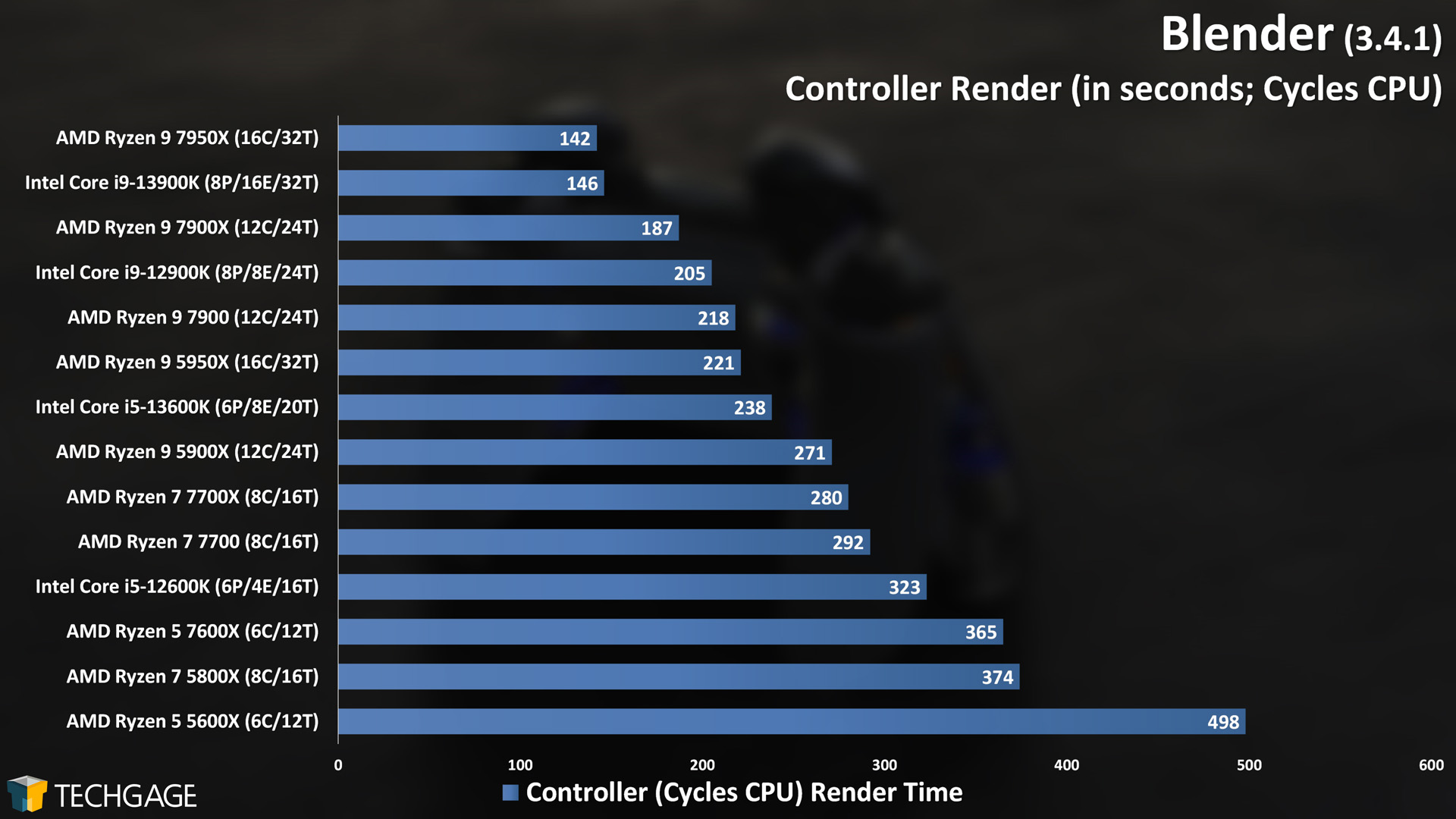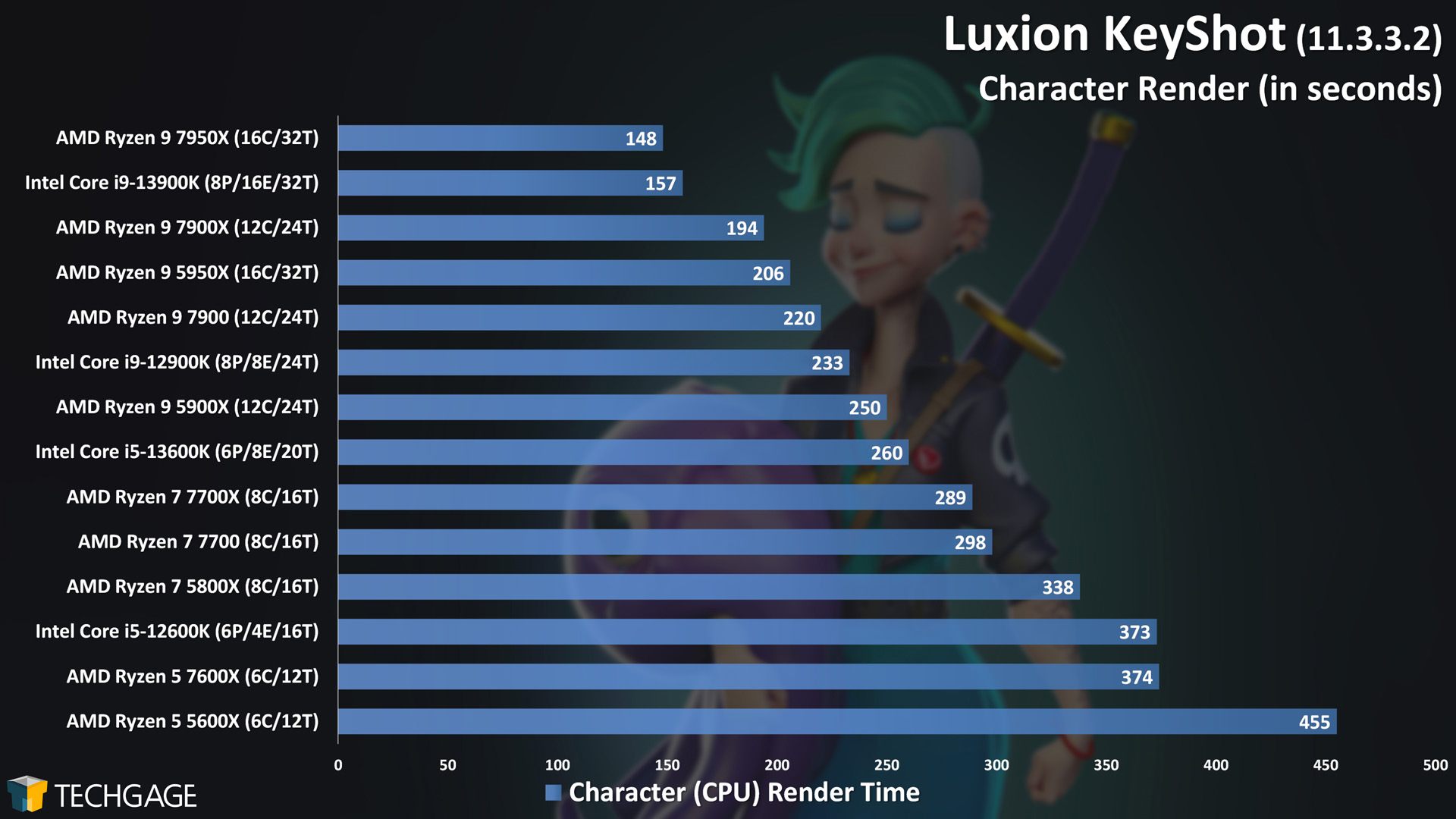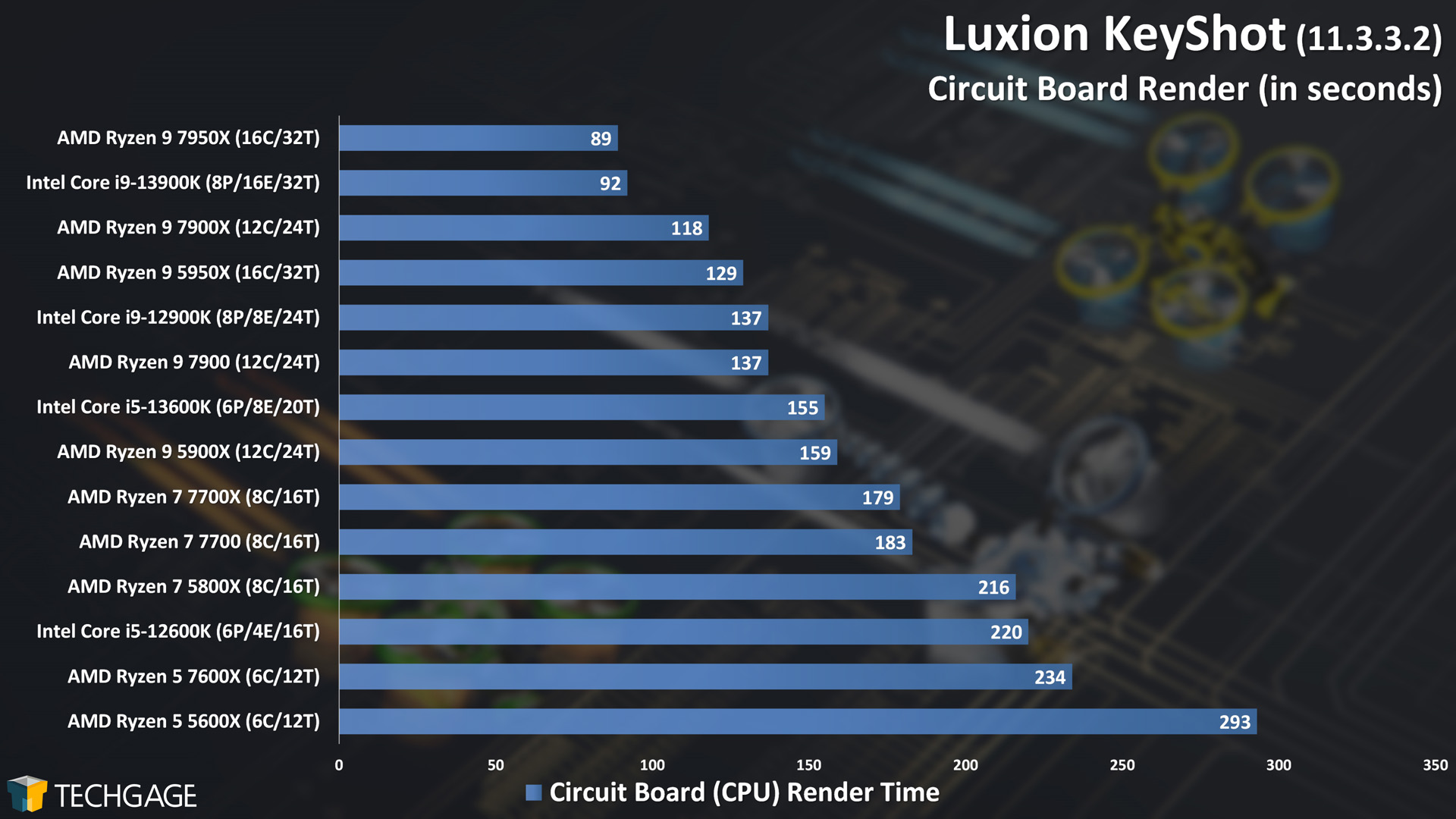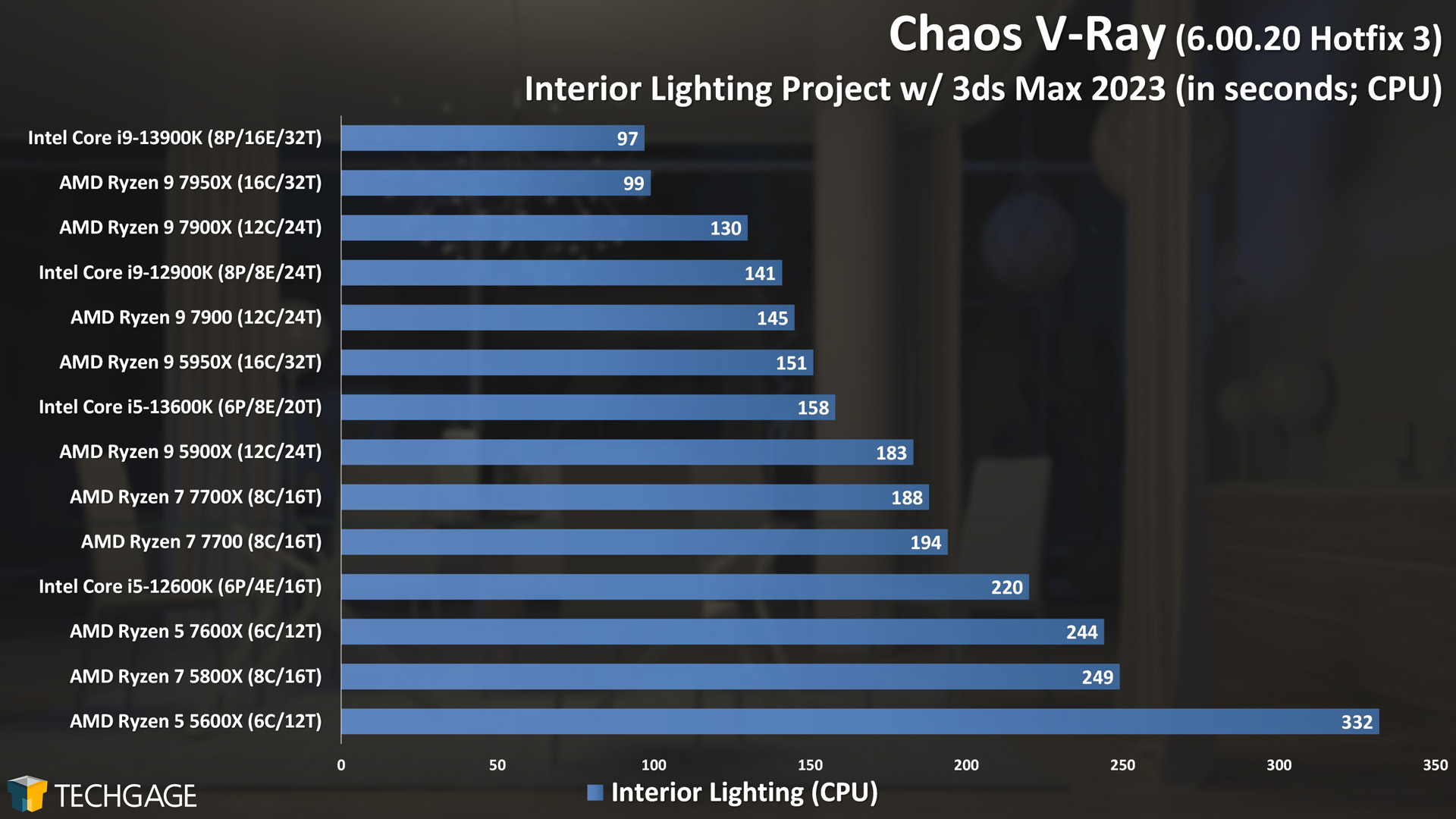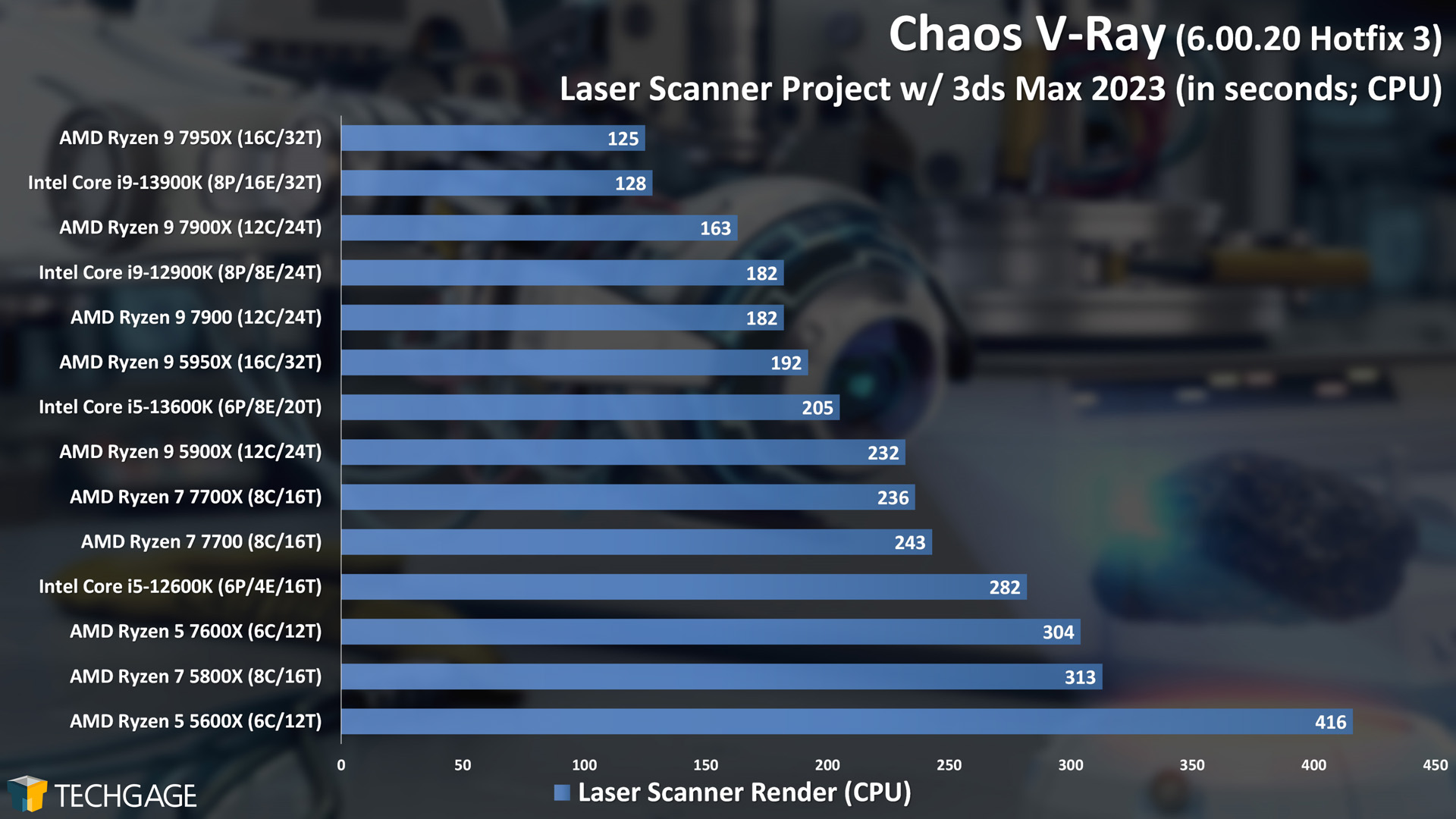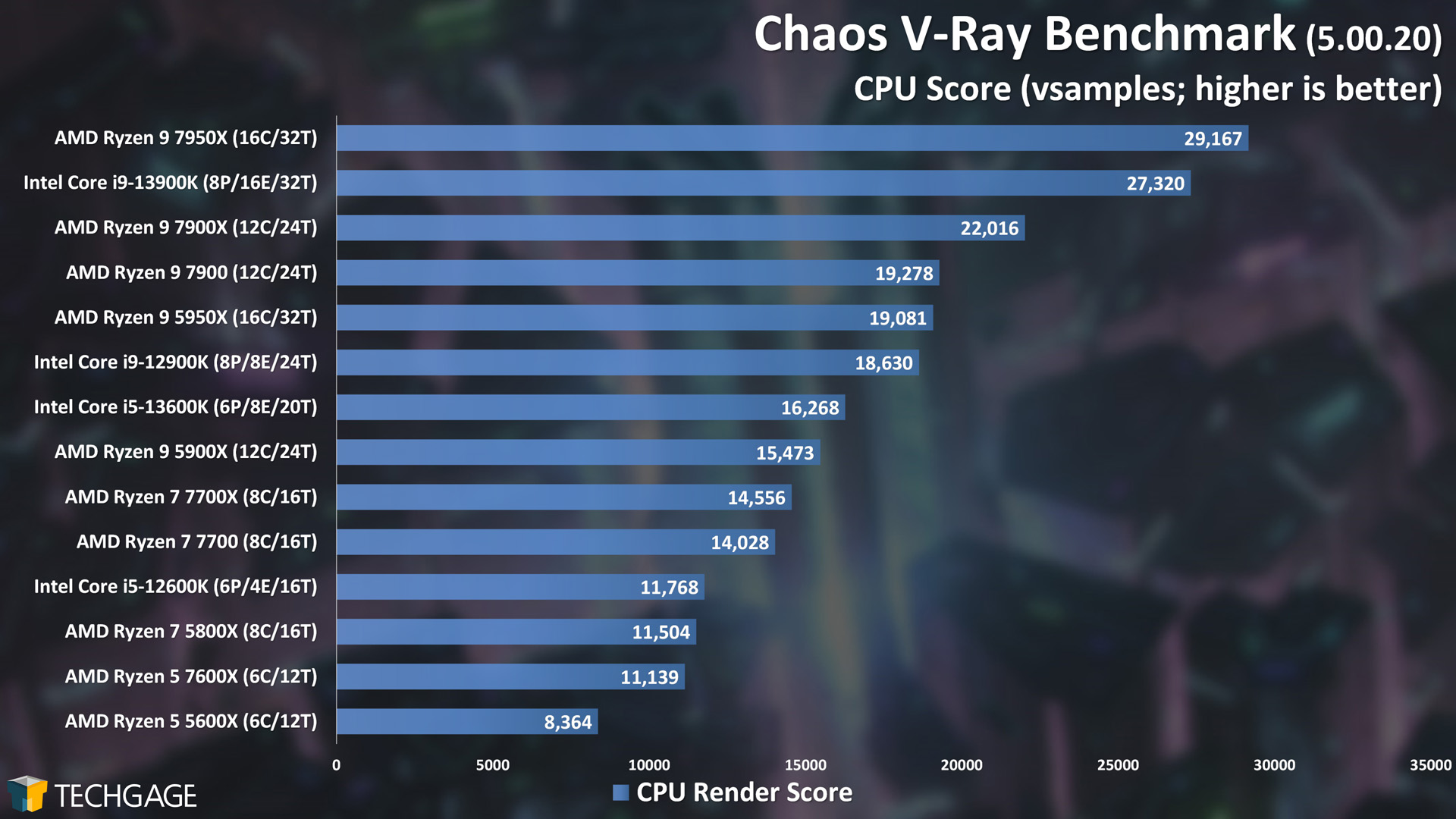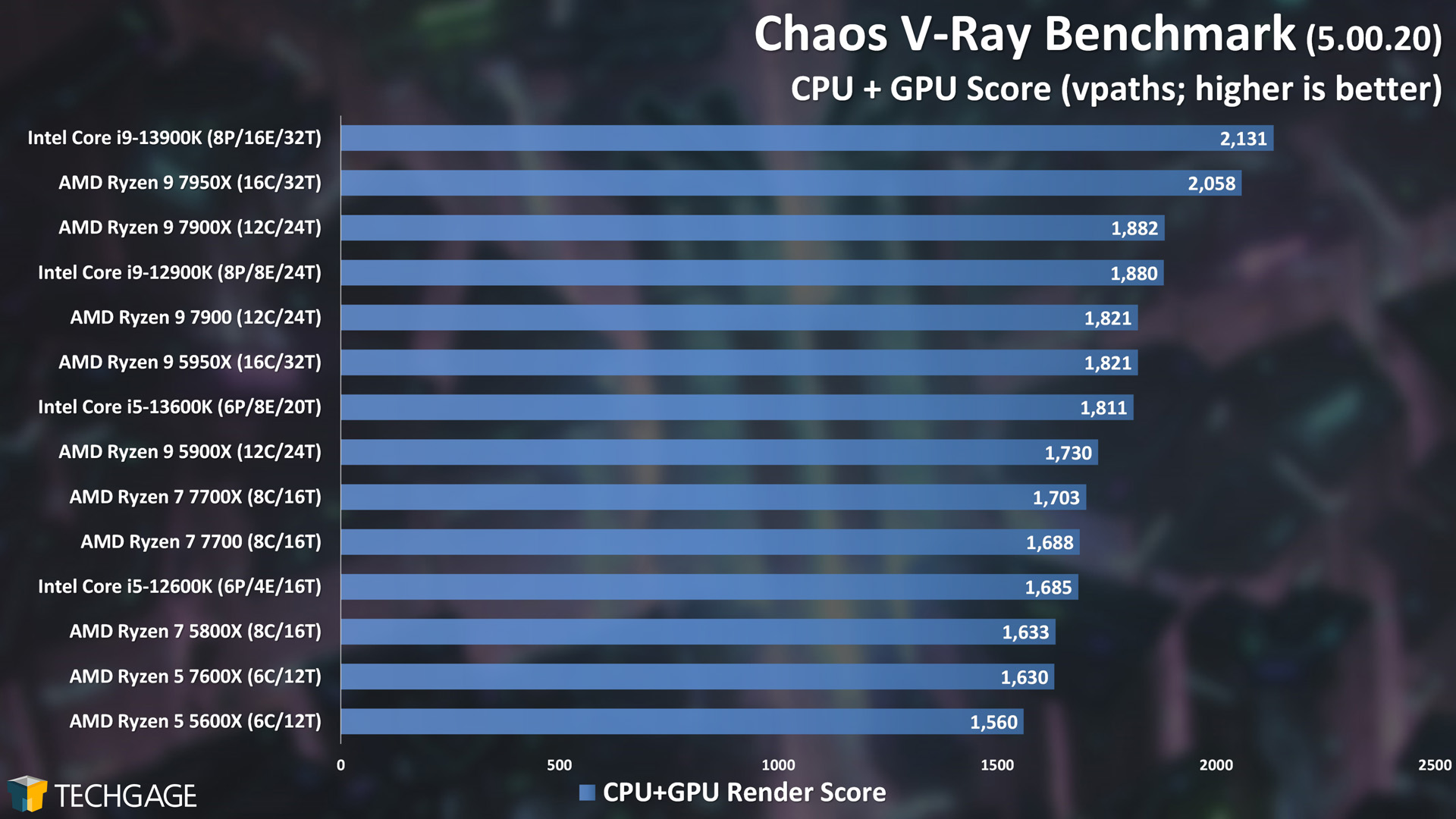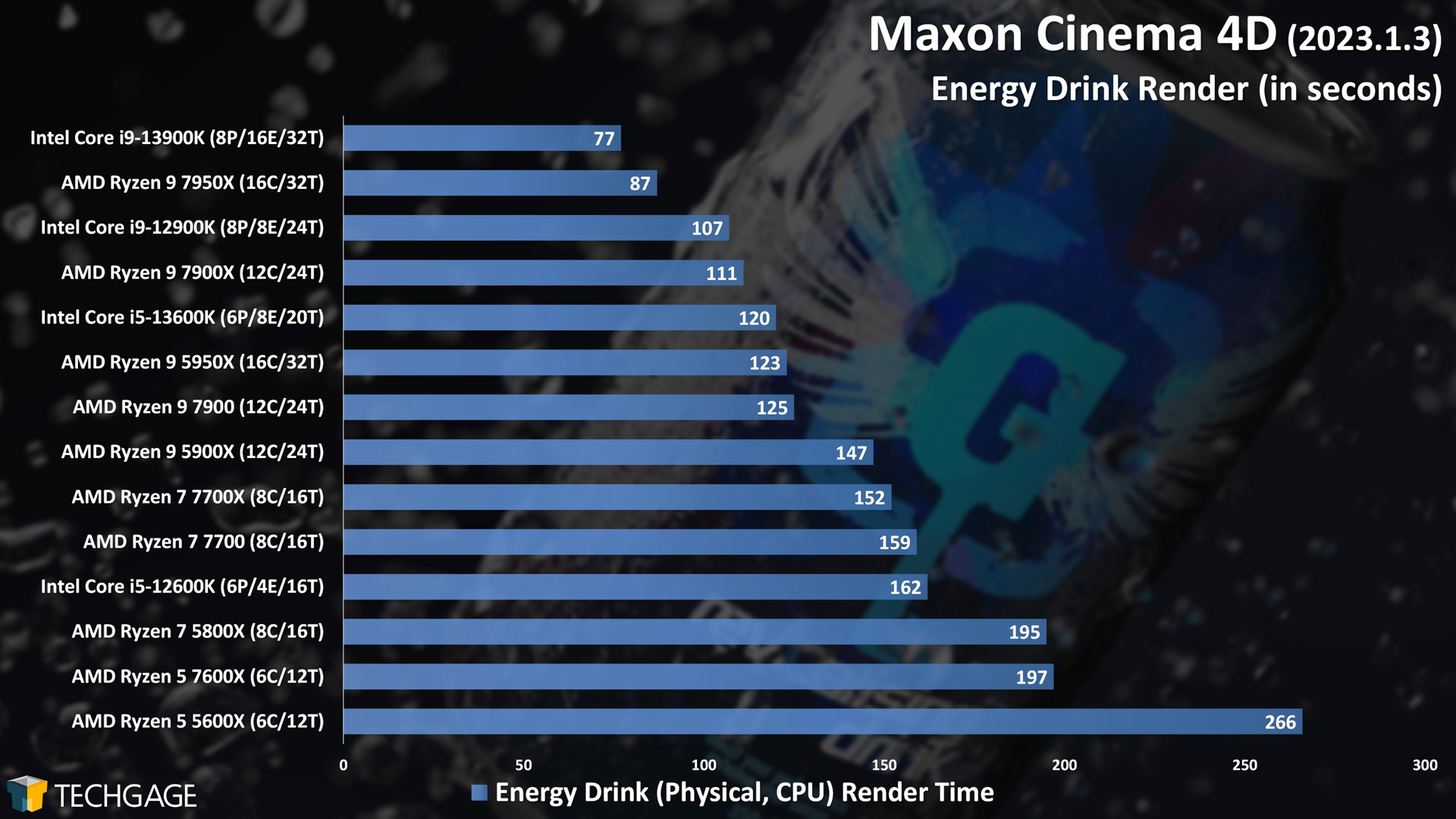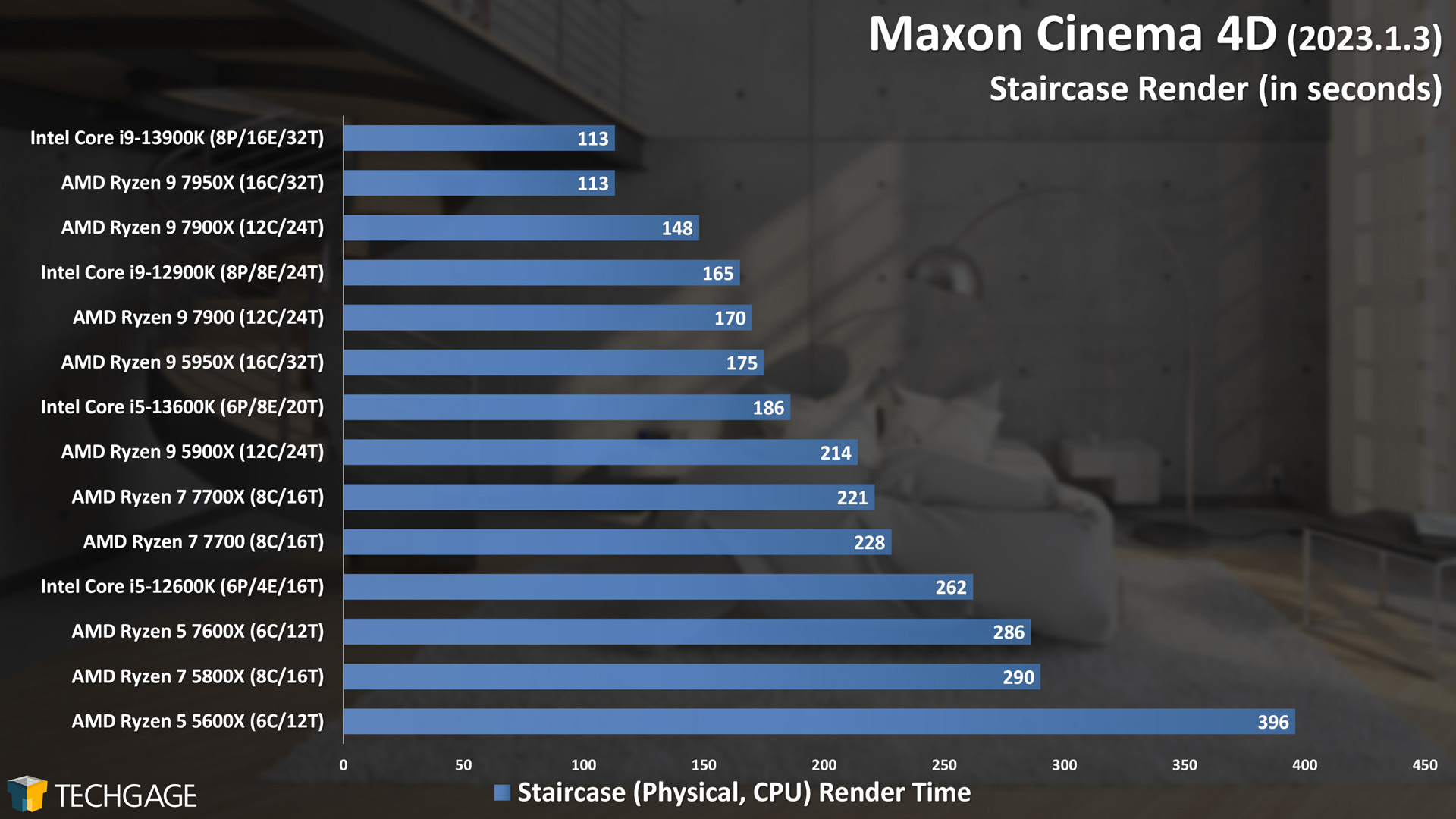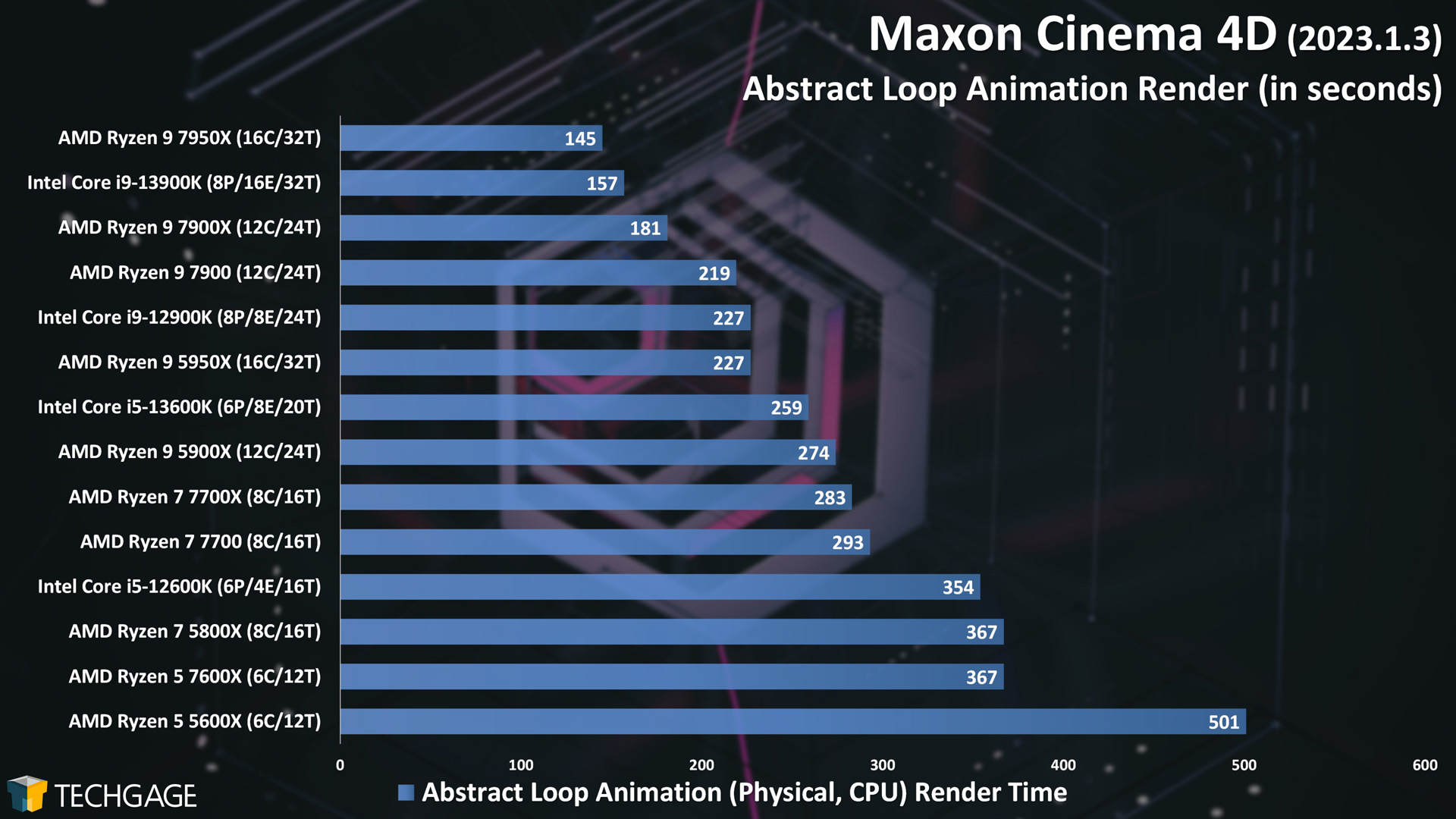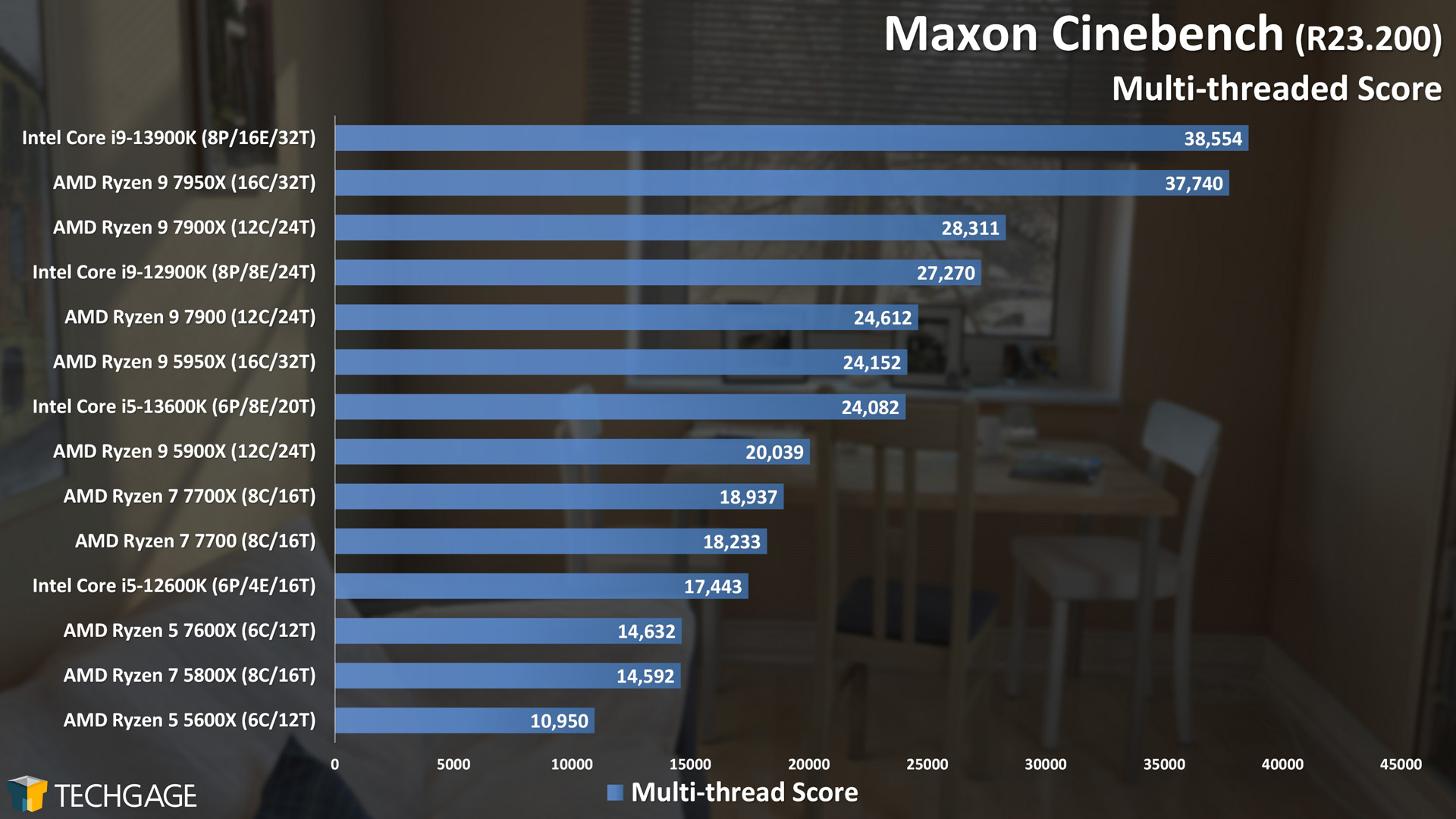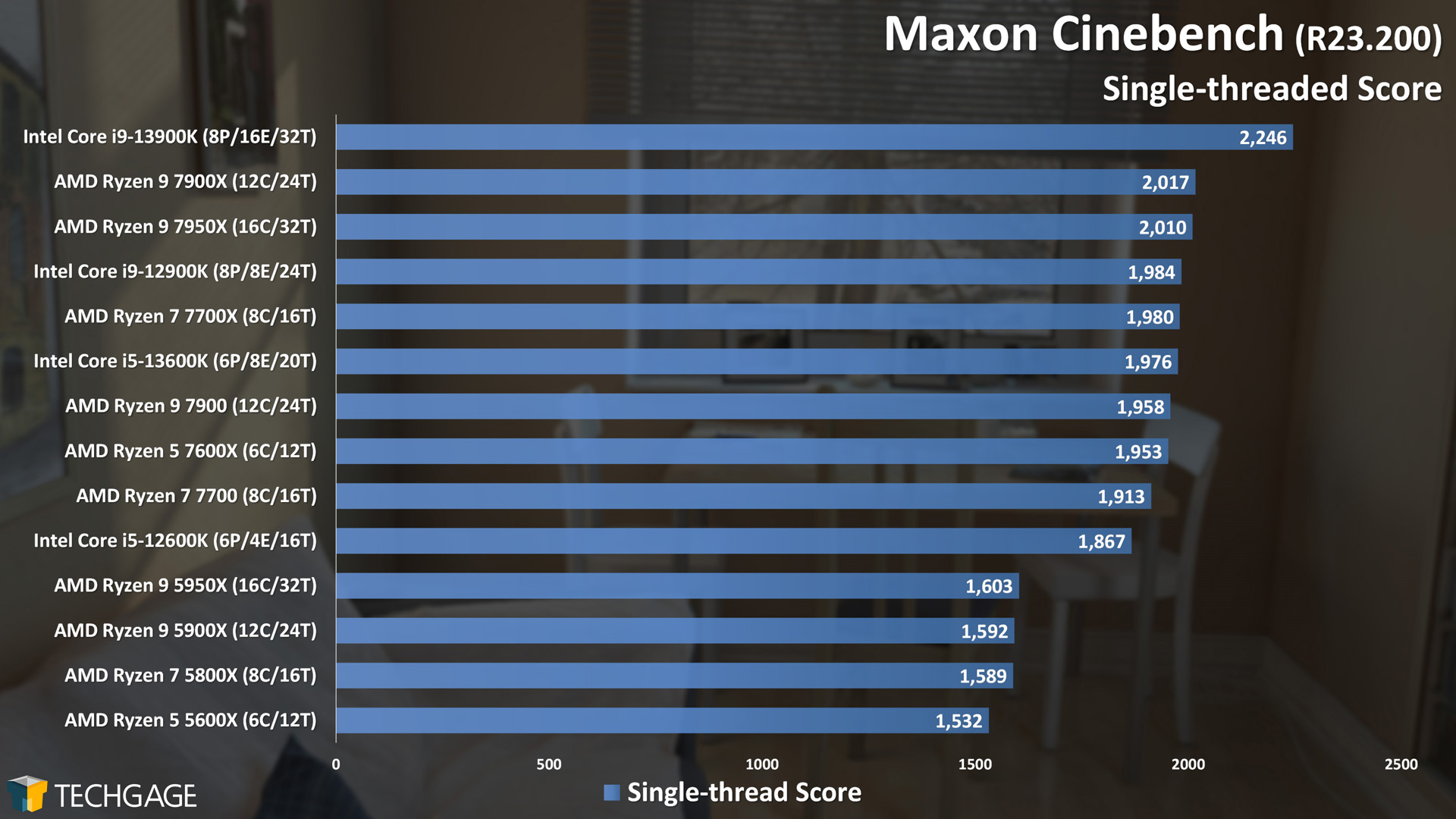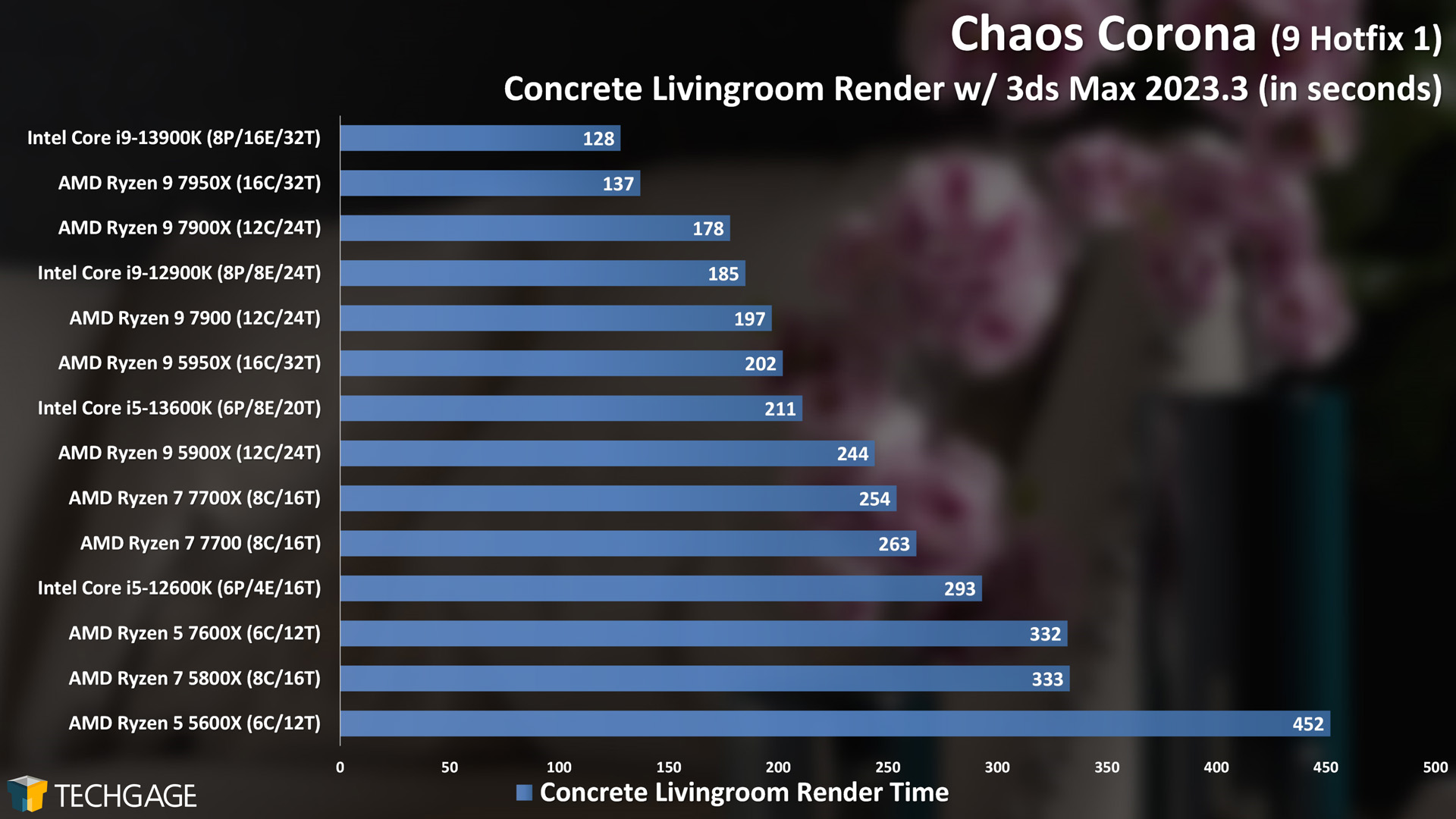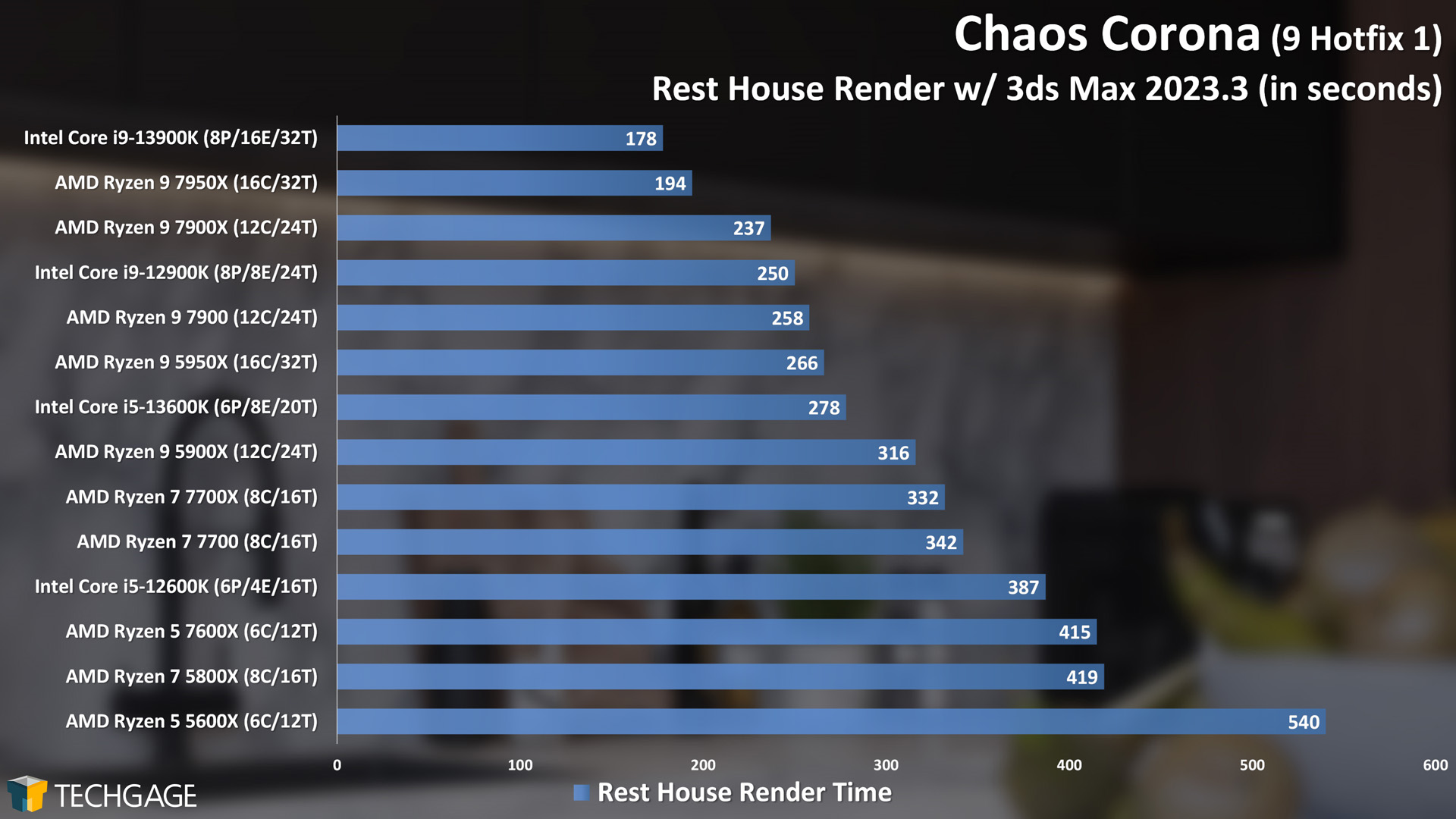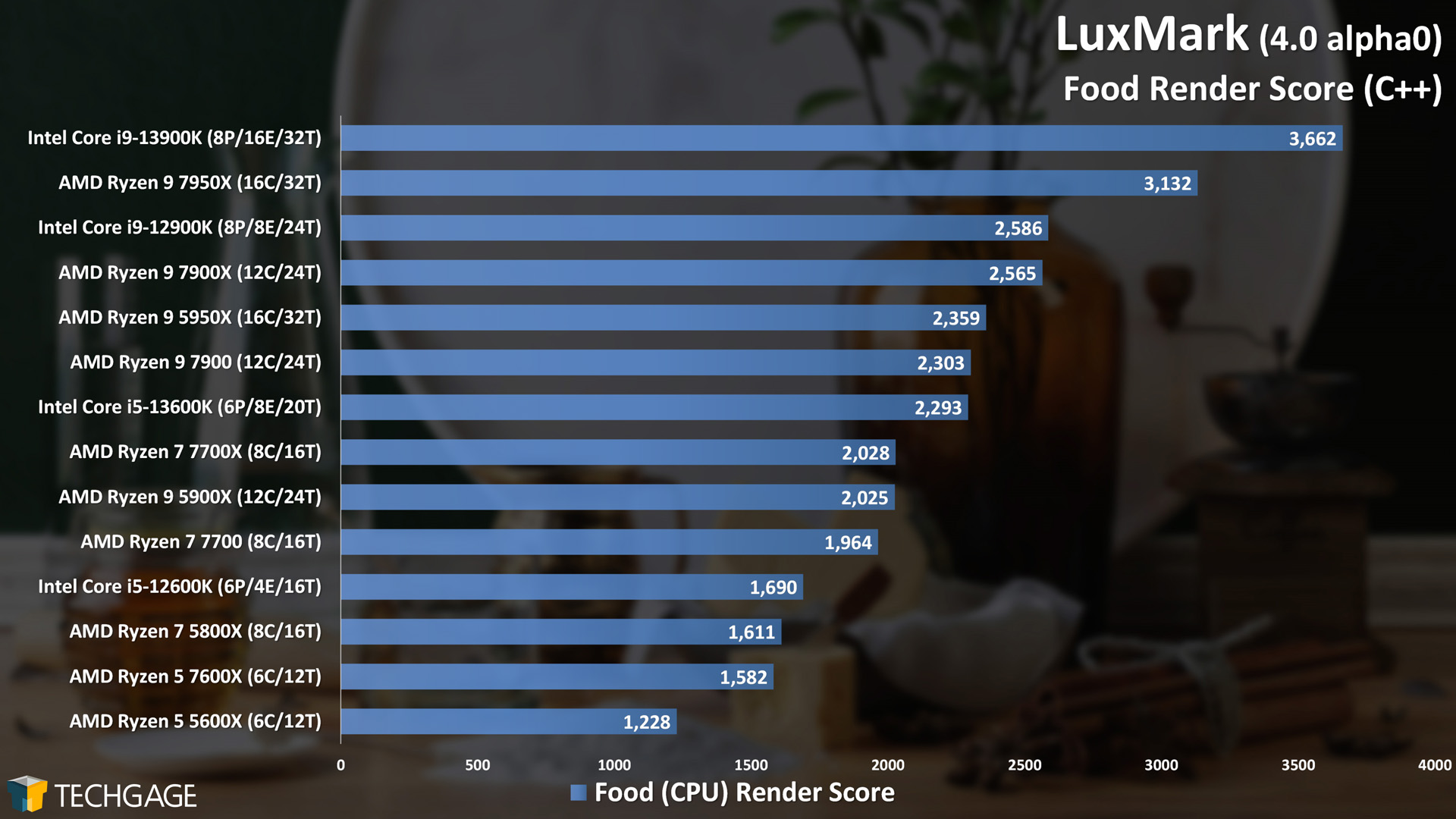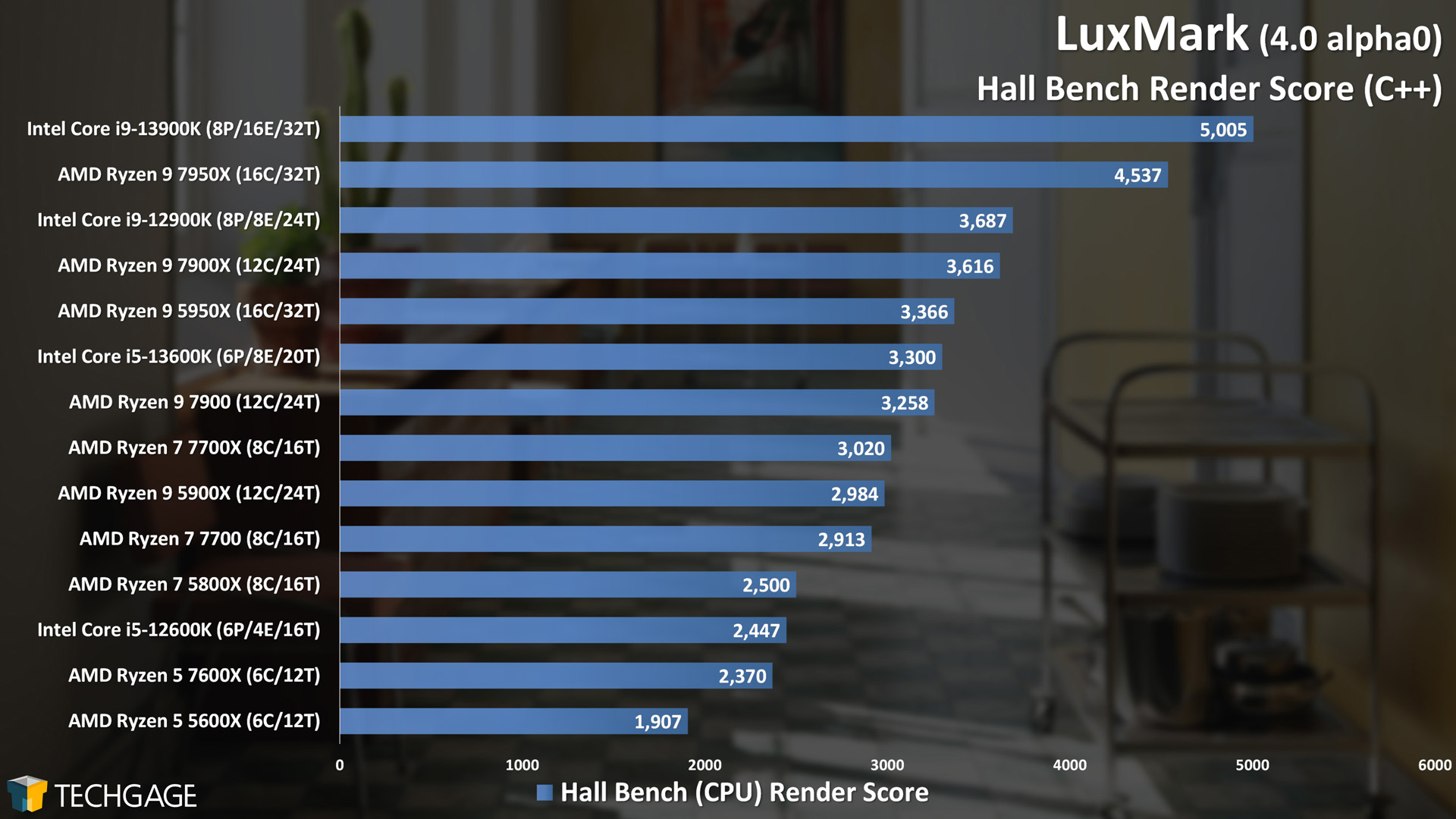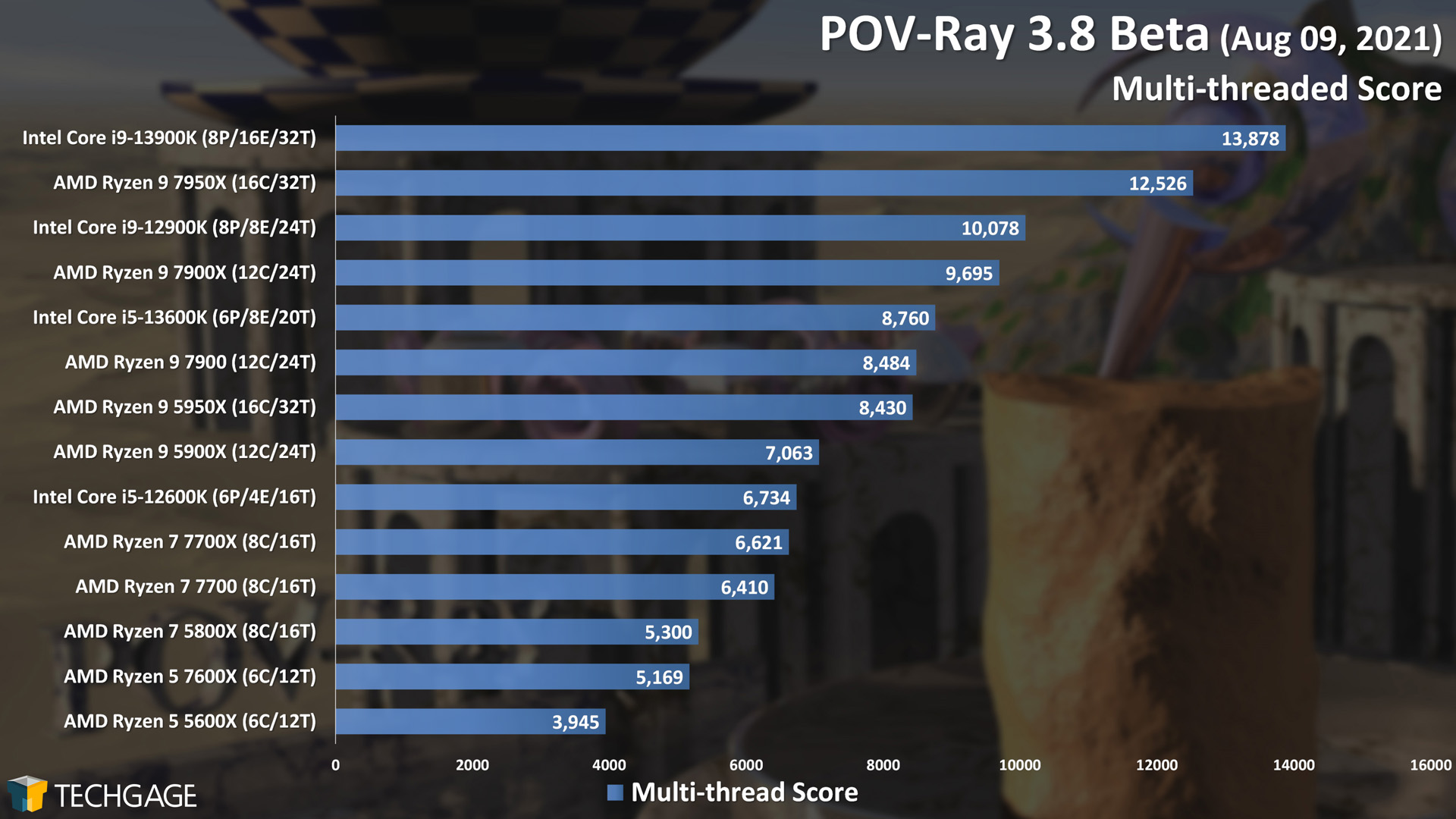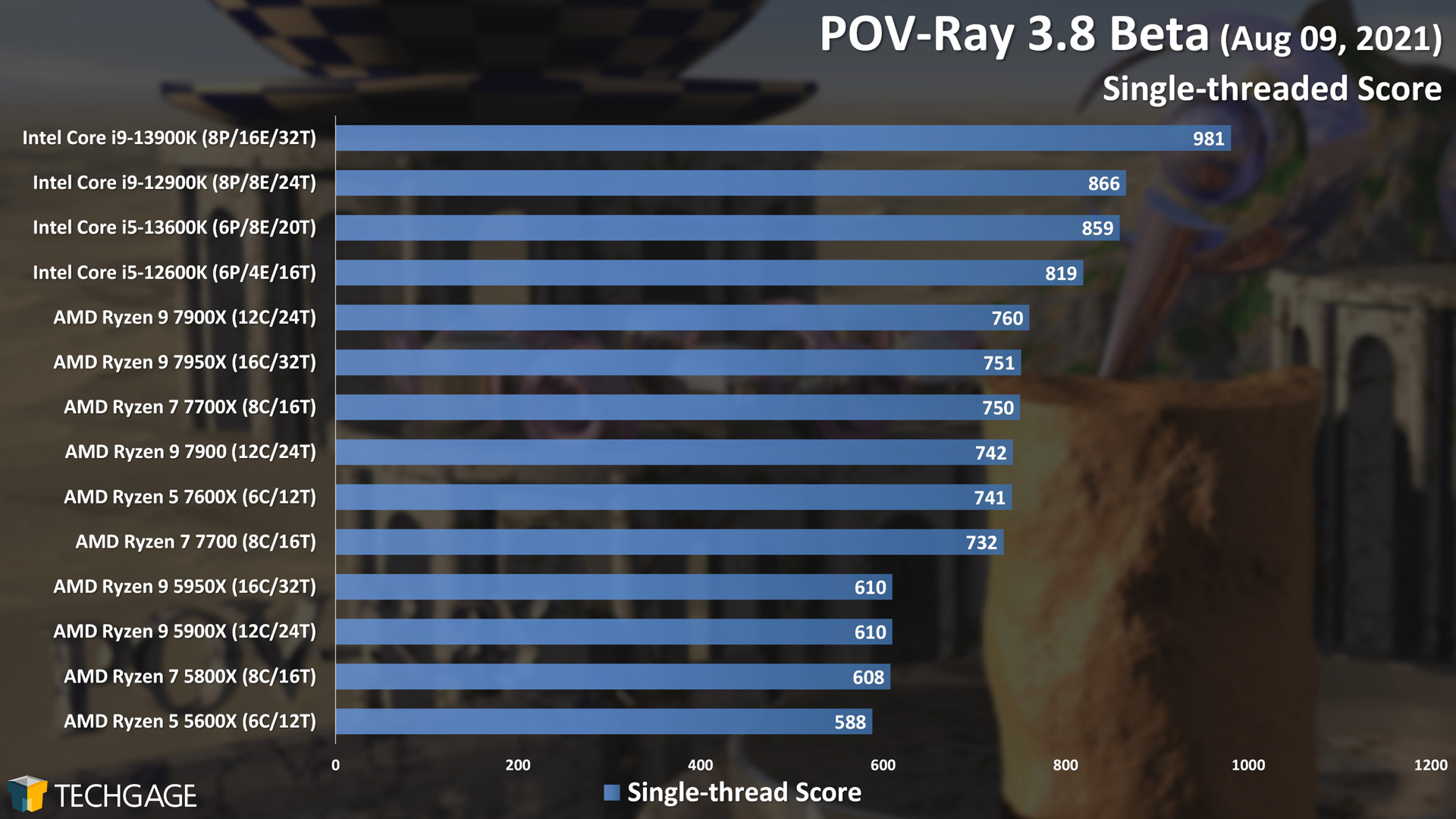- Qualcomm Launches Snapdragon 4 Gen 2 Mobile Platform
- AMD Launches Ryzen PRO 7000 Series Mobile & Desktop Platform
- Intel Launches Sleek Single-Slot Arc Pro A60 Workstation Graphics Card
- NVIDIA Announces Latest Ada Lovelace Additions: GeForce RTX 4060 Ti & RTX 4060
- Maxon Redshift With AMD Radeon GPU Rendering Support Now Available
AMD Ryzen 7000 vs. Intel 13th-gen Core Workstation Performance Review

Which CPU you should be eying for your next workstation depends entirely on your workload, something this article will highlight across a range of tests. With AMD’s Zen 4-based Ryzens and Intel’s Raptor Lake-based Core processors in-hand, we’re exploring performance potential in encoding, rendering, photogrammetry, and others.
Page 3 – Rendering: Arnold, Blender, KeyShot, V-Ray, C4D, Corona & More
Autodesk Arnold
Up until the time that NVIDIA released its first RTX graphics cards, Arnold was designed with only the CPU in mind – and that means all architectures are well optimized for, and that good scaling is almost guaranteed.
Intel kicked off the previous page leading the pack, and it does so again here. AMD’s 7950X doesn’t sit far behind the 13900K, however, and both settle in far ahead of the third-place chip. While we didn’t expect quite the leap at the top like we see, the rest of the scaling is largely expected.
Blender
Intel’s 13900K locked itself to the top of both Arnold graphs, but both it and the 7950X trade blows here in a fight for the top spot. Again, we’re seeing a fairly notable gap between the top two chips and the rest.
We haven’t singled it out up to this point, but it’s worth noting that AMD’s 65W parts (non-X) perform really closely to the higher-power X variants.
Luxion KeyShot
Before Intel struck back hard against AMD with its Alder Lake 12th-gen Core, AMD had no problem topping our KeyShot graphs – and, well, nothing has changed here. It’s not as though Intel’s 13900K is far behind, though.
One thing that stands out to us is how strongly the last-gen Ryzen chips are continuing to perform. The 16-core 5950X sits in the fourth spot in both tests.
Chaos V-Ray
As we noted with Arnold, Chaos’ V-Ray also lived most of its life revolving around rendering to only the CPU, but the company was much quicker than most to add support for GPUs. While we didn’t test it this go-around, V-Ray is designed well for CPU + GPU heterogeneous rendering, and depending on your configuration, it may prove faster than running with accelerated RT (OptiX) alone (Arnold, KeyShot, and V-Ray support no GPU vendor but NVIDIA right now).
The results above are giving us a good hint that performance scaling is going to be really similar across most tests, and that both the i9-13900K and 7950X will continue to share the top spot together. It’s almost uncanny how well aligned both of these chips are in so many tests, despite having vastly different architectural designs.
Chaos’ dedicated V-Ray benchmark shakes things up a little bit with these flagship CPUs:
In the CPU-only test, AMD’s 7950X leapt to the top, while Intel took over once the efforts of a GPU were added in. The CPU-only test above highlights the biggest performance gap (we believe) that’s been seen between the 7900X and 7900, but overall, scaling up and down is expected for the most part.
Maxon Cinema 4D
It’s nice that we tested three separate projects here, because get a better impression of what to expect overall. AMD’s 7950X topped one chart, while the 13900K topped another. Meanwhile, both CPUs shared the exact same result in the third. It’s probably safe to say that both CPUs are just as competent in CPU rendering.
Let’s see what Cinebench has to say:
AMD’s and Intel’s top chips perform similarly in CB’s multi-threaded test, with the 13900K taking the ultimate lead. The same can be said for the single-threaded test, as well, which exhibits a much larger performance delta against the 7950X than we’d expect.
The single-threaded results highlight the improvements AMD has made to its Zen architecture. Intel’s strengths were similar for most chips across generations, but Zen 4 performs far ahead of Zen 3. No one renders with a single thread, but a fast thread means snappier interactions with the software, so it’s nice to see generational improvements.
Chaos Corona Renderer
Bringing more Chaos to our performance results is Corona, a render engine designed for the CPU, and the CPU only. Who needs those GPU distractions, anyway?
Throughout this entire performance article, Intel has proven that it’s shifted a ton of focus into eking as much performance out of its flagship chips as possible. The 13900K has led the pack more often than it hasn’t – although our power tests later will hint to a caveat of that top-rate performance.
LuxMark
LuxCoreRender becomes the latest engine to put Intel’s 13900K ahead of the rest. Permeating that performance prowess through the other results, we also see the 13600K beat out AMD’s 7700X. The 13600K has more threads, but as of the time of writing, costs dozens of dollars less.
POV-Ray
We wrap up our look at rendering performance with POV-Ray, which gives us similar scaling as Maxon’s Cinebench. That puts the 13900K on top of both the multi- and single-threaded results, with AMD’s 7950X keeping not far behind in the multi-thread test. Something about POV-Ray really jives with Intel’s architecture to deliver such strong single-thread performance.
Support our efforts! With ad revenue at an all-time low for written websites, we're relying more than ever on reader support to help us continue putting so much effort into this type of content. You can support us by becoming a Patron, or by using our Amazon shopping affiliate links listed through our articles. Thanks for your support!




